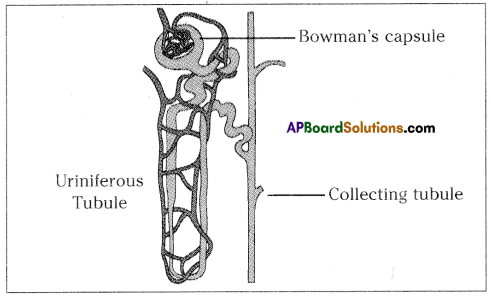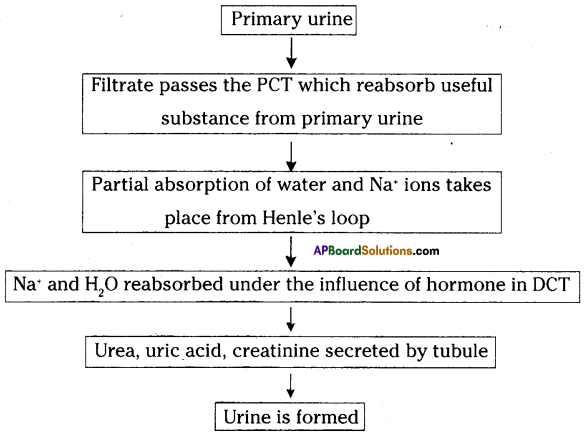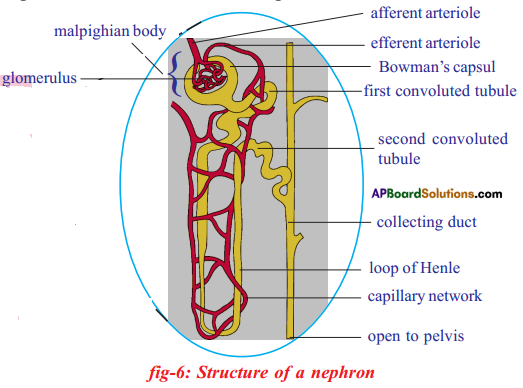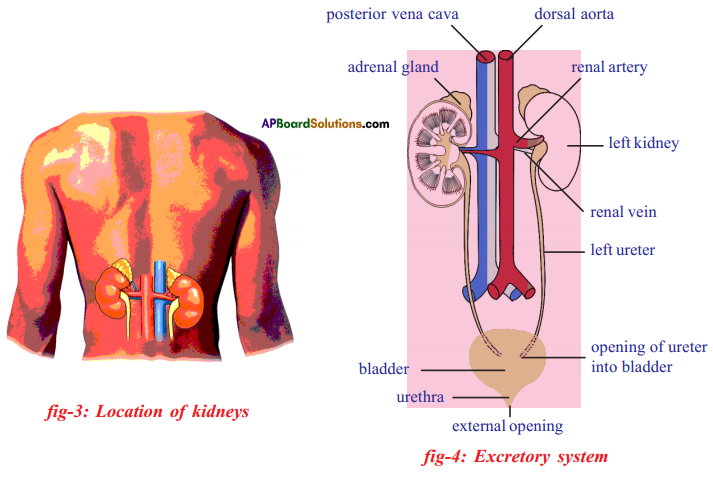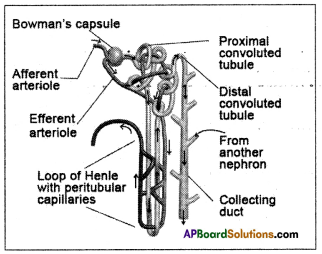AP State Syllabus AP Board 6th Class Science Important Questions Chapter 12 Movement and Locomotion
AP State Syllabus 6th Class Science Important Questions 12th Lesson Movement and Locomotion
6th Class Science 12th Lesson Movement and Locomotion 2 Mark Important Questions and Answers
Question 1.
What is movement?
Answer:
The displacement of a body or its parts from its original position is called movement.
Question 2.
What is locomotion?
Answer:
The displacement of an entire body from one place to another is called locomotion.
![]()
Question 3.
What is the use of locomotion?
Answer:
Locomotion helps for protection and food gathering.
Question 4.
How the muscles are connected to hones?
Answer:
Muscles are connected to bones either directly or with the help of tendons.
Question 5.
How do the muscles work?
Answer:
Muscles work in pairs. When one of them contracts, the bone is pulled in that direction and the other muscle of the pair relaxes.
Question 6.
What is a skeleton?
Answer:
Different bones of our body combine together to form the skeleton.
Question 7.
What is joint?
Answer:
The point where two bones meet is called a joint.
Question 8.
What are the types of joints?
Answer:
Joints are of two types. They are movable and immovable (fixed)
Question 9.
What are the types of movable joints?
Answer:
Movable joints are four types namely 1. Ball and socket 2. Hinge 3. Sliding 4. Pivot joints.
![]()
Question 10.
What is the use of tendons?
Answer:
Tendons join the muscles to bones.
Question 11.
What is the function of the ligament?
Answer:
Ligaments join one bone to the other bone.
Question 12.
Where do you find fixed joints?
Answer:
The joint between the upper jaw and the skull is the fixed joint.
Question 13.
Give some examples for locomotory organs?
Answer:
The stream-lined body, fins in fish; wings, legs in birds; ribs in the snake; muscular foot in snail are useful in locomotion.
Question 14.
How many muscles are there in our body?
Answer:
There are more than 650 muscles in our body.
Question 15.
What is the biggest muscle in our body?
Answer:
The biggest muscle is Gluteus Maximus
Question 16.
What is the smallest muscle in our body?
Answer:
The smallest muscle in our body is Stapedius.
Question 17.
Which muscles work without rest?
Answer:
Interestingly the muscle of the heart works without rest.
![]()
Question 18.
How much blood is pumped by the heart per minute?
Answer:
The human heart forces 4500 ccs of blood per minute through blood vessels.
Question 19.
What is the movable joint in the skull?
Answer:
This lower jaw is the only movable joint of the skull.
Question 20.
How many bones are there in the body?
Answer:
There are 206 bones present in our body.
Question 21.
How the bones are made up of?
Answer:
These bones are so hard they are made of calcium and phosphorus.
Question 22.
What is the biggest bone in our body?
Answer:
The biggest bone is the femur.
Question 23.
What is the smallest bone in our body?
Answer:
The smallest bone is stapes.
Question 24.
Why we can’t move the upper jaw?
Answer:
There is a joint between the upper jaw and the rest of the head. It is a fixed joint. So, you cannot move the upper jaw.
6th Class Science 12th Lesson Movement and Locomotion 4 Mark Important Questions and Answers
Question 1.
How do you observe the shoulder muscles?
Answer:
Make a fist with one hand, bend your arm at the elbow and touch your shoulder with the fist.

Also, touch your upper arm with the other hand, you feel a swollen region inside your upper arm. This is muscle.
The muscle bulges due to contraction.
When the muscle is contracted it becomes shorter, stiffer, and thicker.
![]()
Question 2.
Is it possible to move your parts without moving muscles? Why?
Answer:
It is not possible to move the body parts without moving muscles.
Muscles are fleshy structures that cause movement.
These are attached to one another and perform contraction and relaxation.
By these contractions, bones are pulled in that direction that makes the movement.
Question 3.
How do Muscles work?
Answer:
- Muscles work in pairs.

- When one of them contracts, the bone is pulled in that direction and the other muscle of the pair relaxes.
- To move the bone in the opposite direction, the relaxed muscle contracts and the first one relaxes.
- Thus two muscles have to work together to move a bone.
Question 4.
What is Tendon? What is its role in our body?
Answer:
Some muscles have round, white, and rope-like fibers at their ends that connect them to the bone.
These fibrous structures are called Tendons.
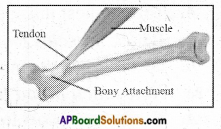
You can feel the tendons in several parts of your body like; above the elbow, beneath the knee, near the ankle.
They have a key role in body movements to pull the bones.
These also help muscles to attach to the bones.
Question 5.
What is Skeleton System? What is its importance?
Answer:
- The different bones of different parts of the body combine together to form a single structure or system. This structure is called the skeleton.
- The skeletal system provides base and shape to our body.
- It provides protection to internal organs.
- It also help in blood formation.
![]()
Question 6.
What is a ligament? What is its use?
Answer:
Two bones are joined together in a special way by fibers. These fibers are called ligaments These helps in bones connection and body movements.
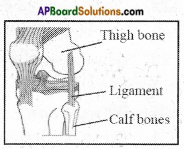
Question 7.
How we are without a skeleton.
Answer:
- It’s funny to imagine our body without a skeleton.
- Without a skeleton, muscles don’t have support.
- So the body does not have a shape.
- The body becomes a fate round ball.
Question 8.
How do you observe the lower jaw bone?
Answer:
Ask your friend to open his mouth and move his lower jaw up and down as well as sideways.
Observe his face carefully.
This is the place where the lower jaw bone is joined to the skull.
Press your finger on both sides of your face and spot where you have these joints. This lower jaw is the only movable joint of another skull.
Question 9.
What is Clavicle? What is its importance?
Answer:
- The clavicle is a long bone between the neck and the shoulder blade it’s also known as collar bone.
- It provides great support to the shoulder and helps to carry weighty things.
Question 10.
How do you observe the Clavicle?
Answer:
- To observe the clavicle fold one arm and rest it on your waist.
- Now slowly lift your arm and shoulder together.

- Run a finger of your other hand from just below your neck towards your shoulder.
- Try and locate a raised bone there and the one behind it.
- The raised bone is called the clavicle and the bone behind it is the shoulder blade.
![]()
Question 11.
What are the differences between Ribs and Ric Case?
Answer:
| Ribs | Rib case |
| 1. Ribs are the bones in chest cavity. | 1. Ribs connect together and form rib case. |
| 2. These are 12 in pair. | 2. Its single in number. |
| 3. These are connected to chest bone at front side and back bone to back side. | 3. Whole structure of chest bone, ribs and back bone is called as rib case. |
| 4. Helps in respiratory movements and protection. | 4. It protects lungs and heart. |
Question 12.
How do you observe the backbone?
Answer:
- Ask your friend to stand up, bend forward at the waist and try to touch his toes with his palms.
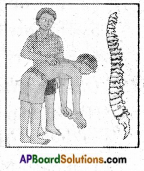
- Run a finger along the center of his back from below the neck.
- A long structure running down the middle of his back is called the backbone.
Question 13.
How do you observe the Pelvic Girdle?
Answer:
- Press the area just below your waist with the fingers of both hands.

- You can feel the bones with the same shape on both sides of your body. This is called the pelvic girdle.
- Here the leg bones are attached to the bottom of the spine by a group of bones. This is called the pelvis.
- This is also the part you sit on.
Question 14.
Write about the Skull?
Answer:
- The skull is made up of many bones joined together.
- It encloses and protects the brain.

- The joints between the skull bones are fused.
- They are also called fixed joints.
![]()
Question 15.
What is Cartilage? How it useful to the body?
Answer:
- Some parts of the ear and nose are soft and others are hard.
- The soft parts are made up of a structure called cartilage.
- This is also a bone but it is flexible.
- The cartilage is present in other parts of the skeleton as well, like, between the tips of the rib, eyelids, and sternum, between the vertebrae of the vertebral column, etc.
- It protects the ends of long bones at the joints and is a structural component of the rib cage, the ear, and the nose.
Question 16.
What are the joints? What are the types in it?
Answer:
- The point where two bones meet is called a Joint.
- The joints help us to bend, twist and turn.
- There are different types of joints in our body to help us carry out different movements and activities.
- The joints are divided into two types. 1. Movable joints 2. Immovable joints
Question 17.
Write about fixed joints?
Answer:
- Some joints between bones in our body can’t move, such joints are called fixed joints.
- These joints are fused and seem to be a single bone.
- These are present in the skull. When you open your mouth, you can move your lower jaw only.
- The remaining joints are fixed joints in the skull.
Question 18.
Write about locomotion in birds?
Answer:
- Birds fly in the air and walk on the ground.
- Birds can fly because their bodies are well suited for flying.
- Their bones are hollow and light.
- The bones of the hind limbs are typical for walking and perching.
- The forelimbs are modified as wings which help the bird in flight.
- Feathers also play an important role in flight mechanism.
Question 19.
Observe the hen and the sparrow. How do they move?
Answer:
Hen and Sparrows, both are birds but they have different styles in locomotion.
| HEN | SPARROW |
| 1. It can’t fly. | 1. It can fly. |
| 2. Walking is main locomotion. | 2. It can jump and fly. |
| 3. Legs are enough strong. | 3. Legs are thin and weak. |
| 4. Wings are not enough strong to ; floats its body in air. | 4. Wings are enough strong to fly. |
Question 20.
Describe the Locomotion in Snakes?
Answer:
- Snakes do not have limbs (legs).
- Snakes have a long backbone and several muscles.
- Usually, the snake’s body curves into many loops.
- Each loop of the snake gives it a forward push by pressing against the ground.
- This helps the snake move forward very fast.
![]()
Question 21.
How do you observe the Locomotion in Snails?
Answer:
- Collect a snail from a garden.
- Place the snail on a glass plate and watch it when it starts moving.
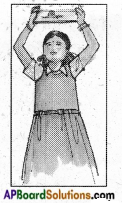
- A thick structure may come out of an opening in the shell.
- The thick structure is its foot, made of strong muscle.
- The wavy motion of its foot is the reason why a snail moves slowly.
6th Class Science 12th Lesson Movement and Locomotion 8 Mark Important Questions and Answers
Question 1.
There are other ways in which snakes move. Try to find out about them. Collect those pictures, information and display them on wall magazine.
Answer:
Snakes have four ways of moving around. Since they don’t have legs they use their muscles and their scales to do the “walking”.
- Serpentine method: This motion is what most people think of when they think of snakes. Snakes will push off of any bump or other surface, rocks, trees, etc., to get going. They move in a wavy motion. They would not be able to move over slick surfaces like glass at all. This movement is also known as lateral undulation.
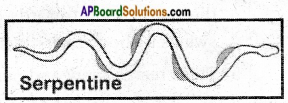
- Concertina method: This is a more difficult way for the snake to move but is effective in tight spaces.
The snake braces the back portion of their body while pushing and extending the front portion. Then the snake drops the front portion of their body and straightens and pulls the back portion along. It is almost like they threw themselves forward.

- Side winding: This is a difficult motion to describe but it is often used by snakes to move on loose or slippery surfaces like sand or mud. The snake appears to throw its head forward and the rest of its body follows while the head is thrown forward again.
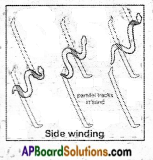
- Rectilinear Method: This is a slow, creeping, straight movement. The snake uses some of the wide scales on its belly to grip the ground while pushing forward with the others.

![]()
Question 2.
Write about movable joints in Human beings?
Answer:
Movable joints are four types. They are:
- Ball-and-socket joint: The ball-shaped surface of one bone fits into the cup-like shape of another. Examples of a ball-and-socket joint include the hip and the shoulder.
- Hinge joint: The ends of the bones are shaped in a way that allows motion in two directions, forward and backward. Examples of hinge joints are the knees and elbows
- Pivot joint: Only allows rotating movement. The joint that joins the skull to the backbone is called the pivot or neck joint.
- Gliding joint: It is a joint which allows only gliding movement. The gliding joint allows one bone to slide over the other. The gliding joint in your wrist allows you to flex your wrist. It also allows you to make very small side-to-side motions. There are also gliding joints in your ankles and backbone.
Question 3.
How the fish swim in the water?
Answer:
- The body of the fish is streamlined.
- The shape is such that it allows the fish to move in water easily.
- The skeleton of the fish is covered with strong muscles.
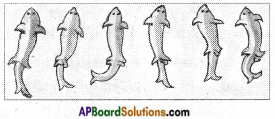
- While swimming, muscles make the front part of the body swing towards one side while the tail swings its body towards the opposite side.
- This creates a jerk and pushes the body forward.
- A series of such jerks help the fish swim forward.
- The tail fins also aid in this movement.
Question 4.
Write about different types of Locomotion and their Locomotory Organs in a tabular manner.
Answer:
Animals show different types of locomotion with their locomotory organs. Those are:
| Locomotion | Animals | Locomotary Organ |
Discription |
| 1. Swim | Fish | Fins | Fins and spindle body helps to fish in swimming. |
| 2. Fly | Birds | Wings | Birds have strong feathered wings to fly. |
| 3. Crawl | Snakes | Scales | Snakes crawl with scales that are present at bottom of the body. |
| 4. Walk | Man | Legs | Animals use four legs to walk, but humans two. |
![]()
Question 5.
Observe the skeletal system of a bird and write their parts.
Answer:
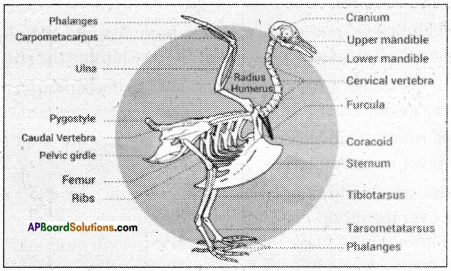
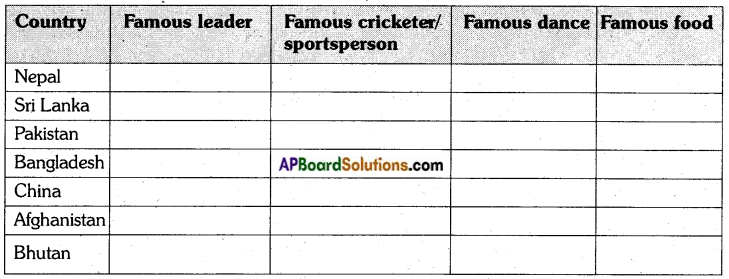
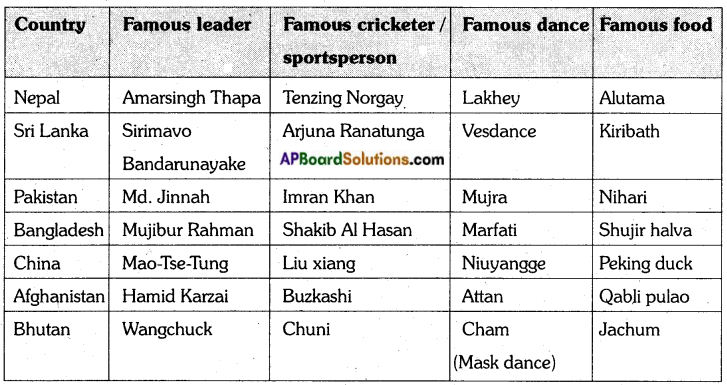
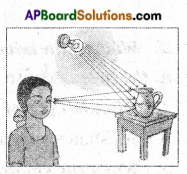
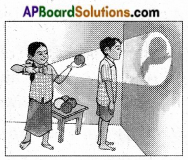




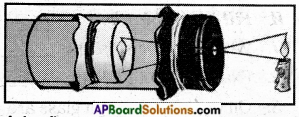
 Answer:
Answer:

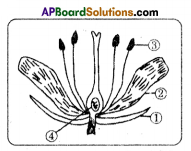 i) Name male and female reproductive parts of the above figure.
i) Name male and female reproductive parts of the above figure.


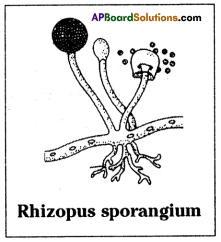


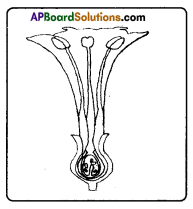 i) What are the four main parts of a flower?
i) What are the four main parts of a flower?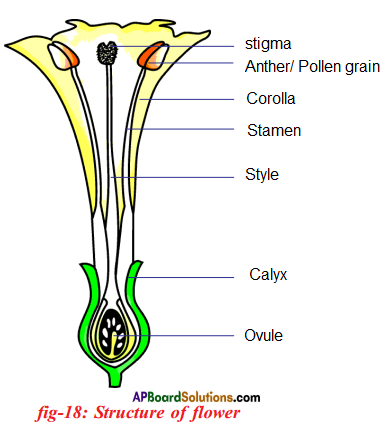 ii) A. Androecium or Stamen
ii) A. Androecium or Stamen
 ii) The function of testosterone hormone is maintaining of secondary sexual chracters in males.
ii) The function of testosterone hormone is maintaining of secondary sexual chracters in males.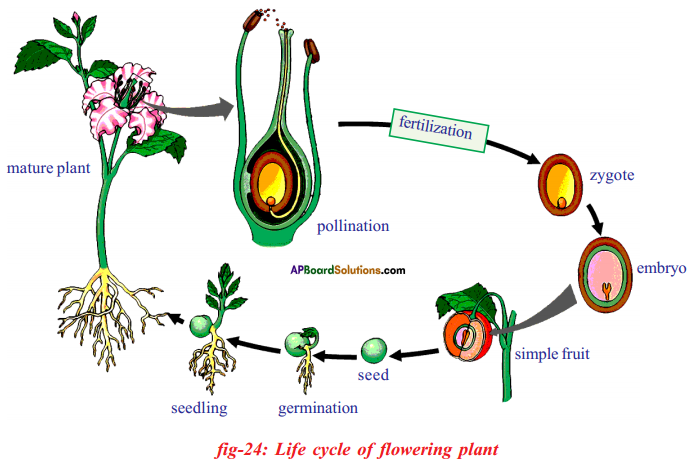

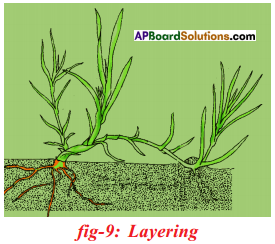
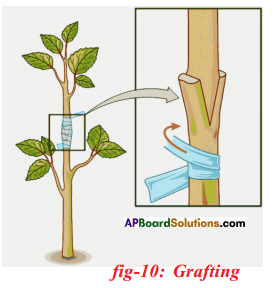
 Answer:
Answer:
 b) If fallopian tubes are closed the sperm can not reach the ova, fertilization will not happen and zygote will not form.
b) If fallopian tubes are closed the sperm can not reach the ova, fertilization will not happen and zygote will not form.
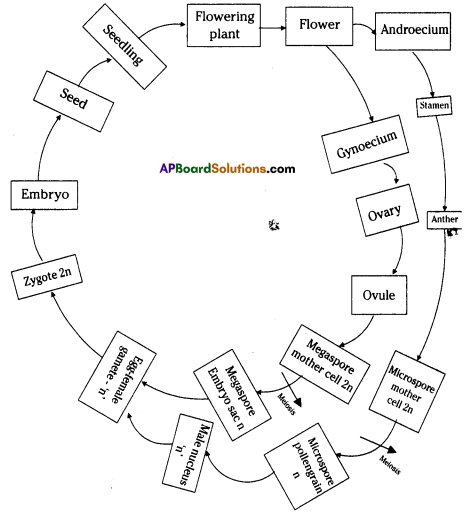


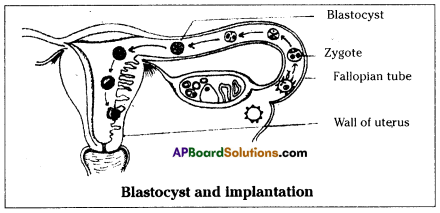
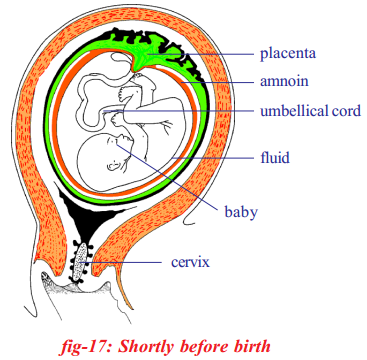
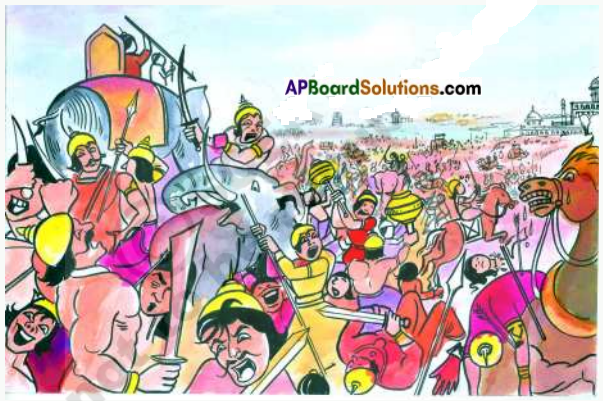







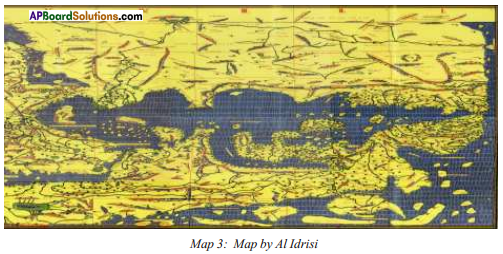 Note: To read this map we should turn it upside down.
Note: To read this map we should turn it upside down. Answer:
Answer: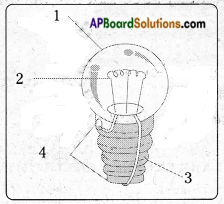
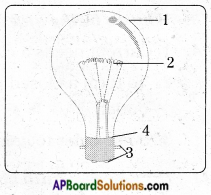


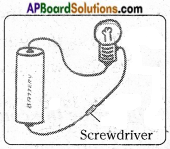
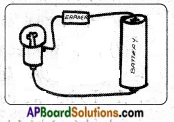
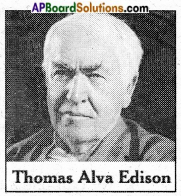
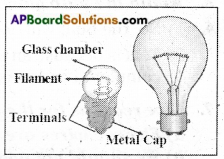
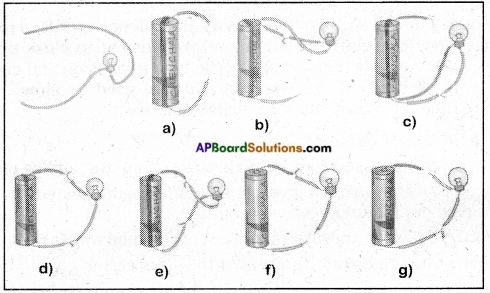

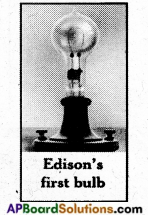

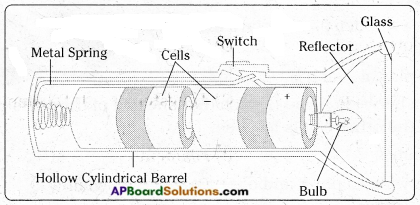




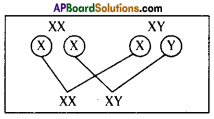 Who decides the sex of the baby – mother or father? How?
Who decides the sex of the baby – mother or father? How?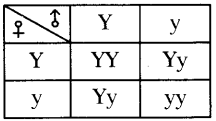 (OR)
(OR)


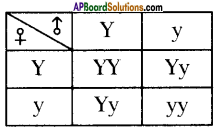 i) Write phenotypic ratio of monohybrid cross.
i) Write phenotypic ratio of monohybrid cross. All pea plants are yellow in F1 generation on self pollination in F1 generation.
All pea plants are yellow in F1 generation on self pollination in F1 generation. In F2 generation, we can observe that 75% are yellow seed producing pea plants and 25% are green ones.
In F2 generation, we can observe that 75% are yellow seed producing pea plants and 25% are green ones.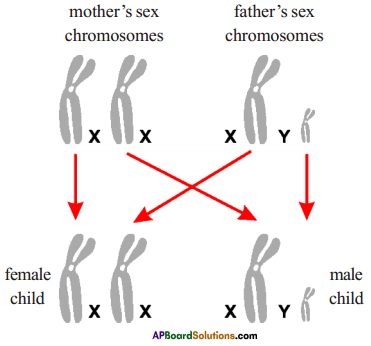 Answer:
Answer: a) Draw a probable diagram showing transfer of chromosomes from parents to give birth to male child.
a) Draw a probable diagram showing transfer of chromosomes from parents to give birth to male child.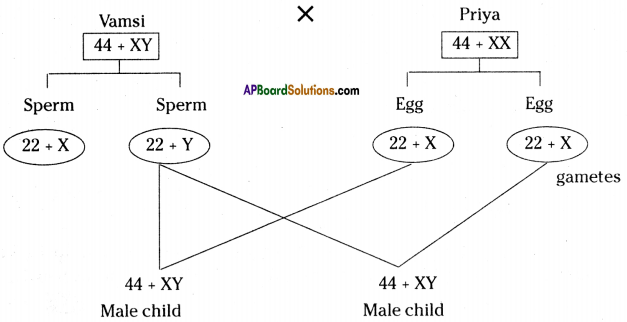 b) Who determines the sex of the baby? How can you say ?
b) Who determines the sex of the baby? How can you say ? i) What does the flow – chart represent?
i) What does the flow – chart represent?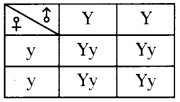
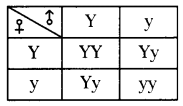

 The above is a procedure of haemodialysis in a hospital.
The above is a procedure of haemodialysis in a hospital.